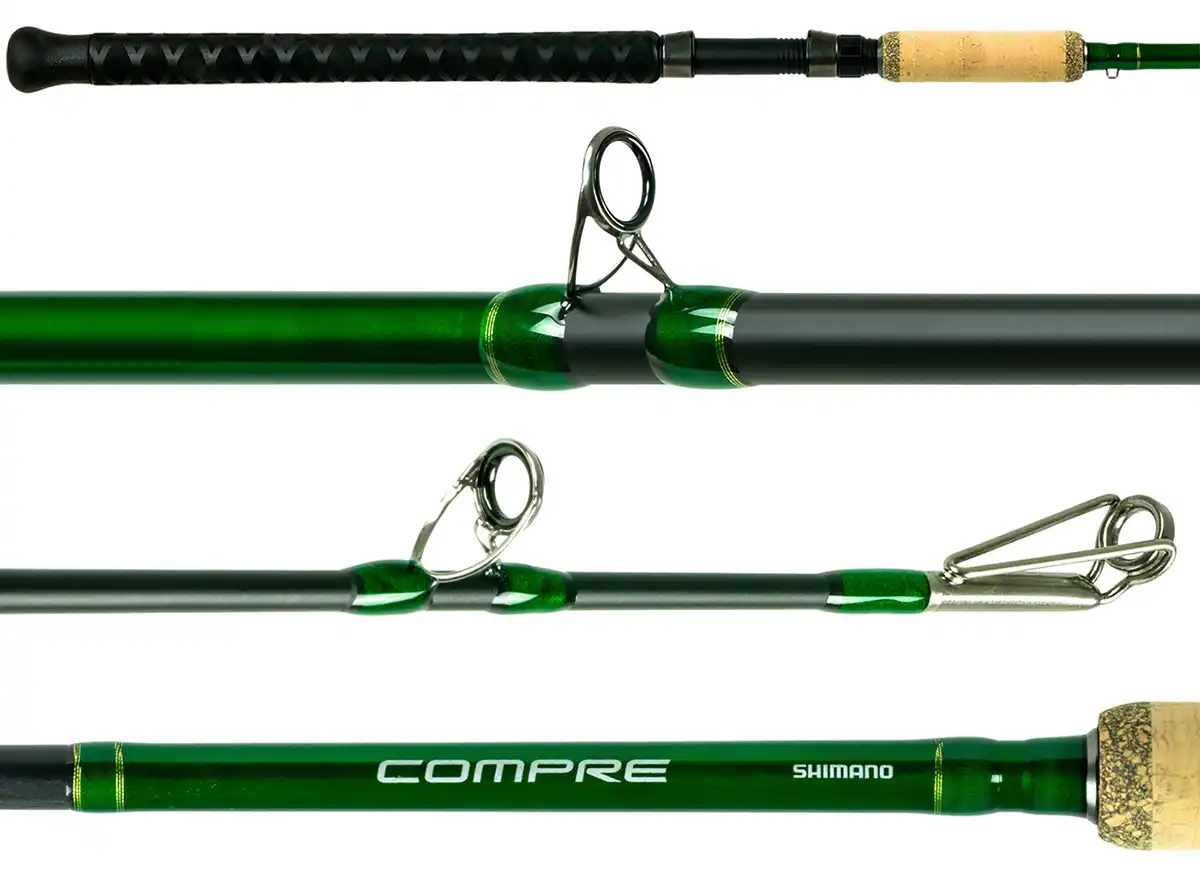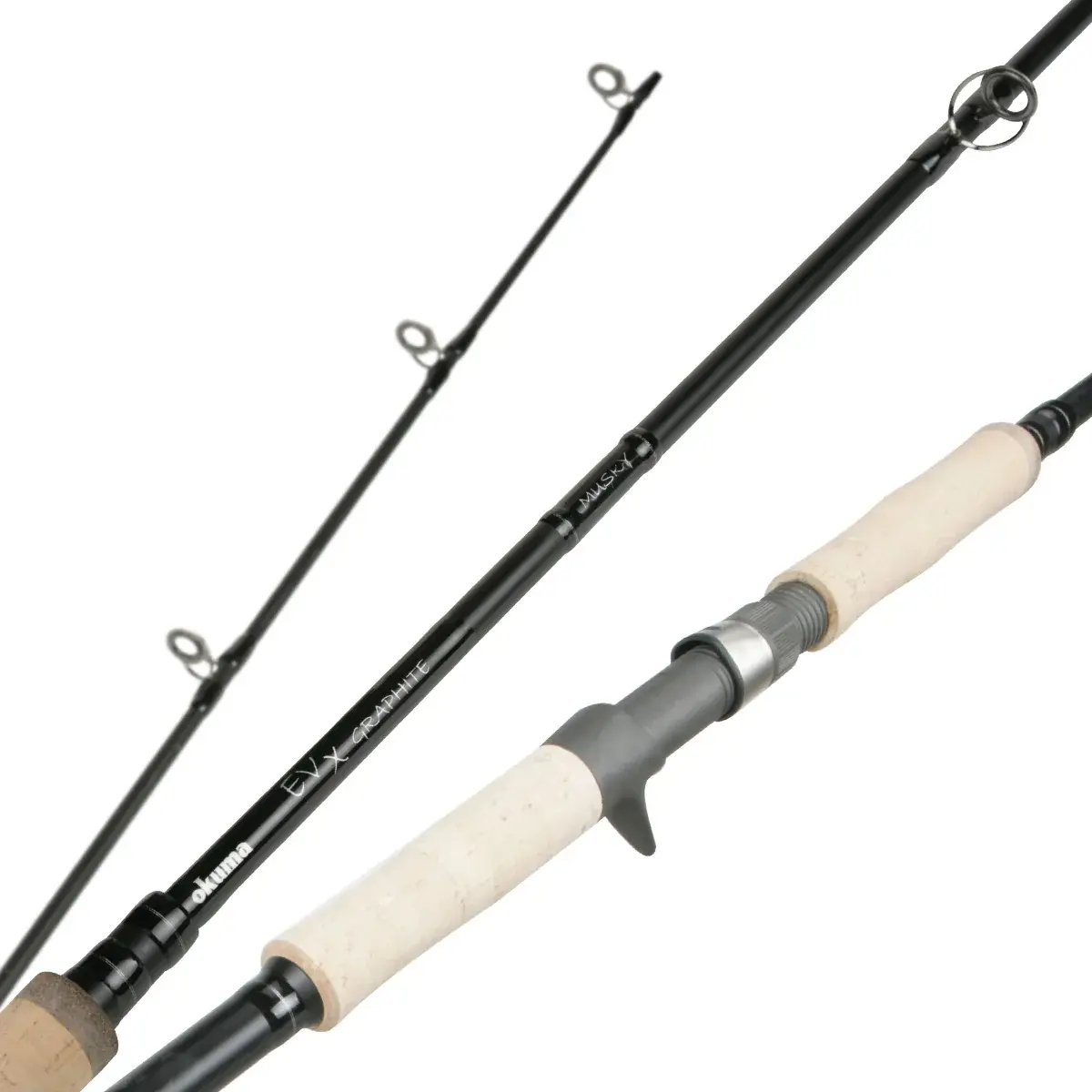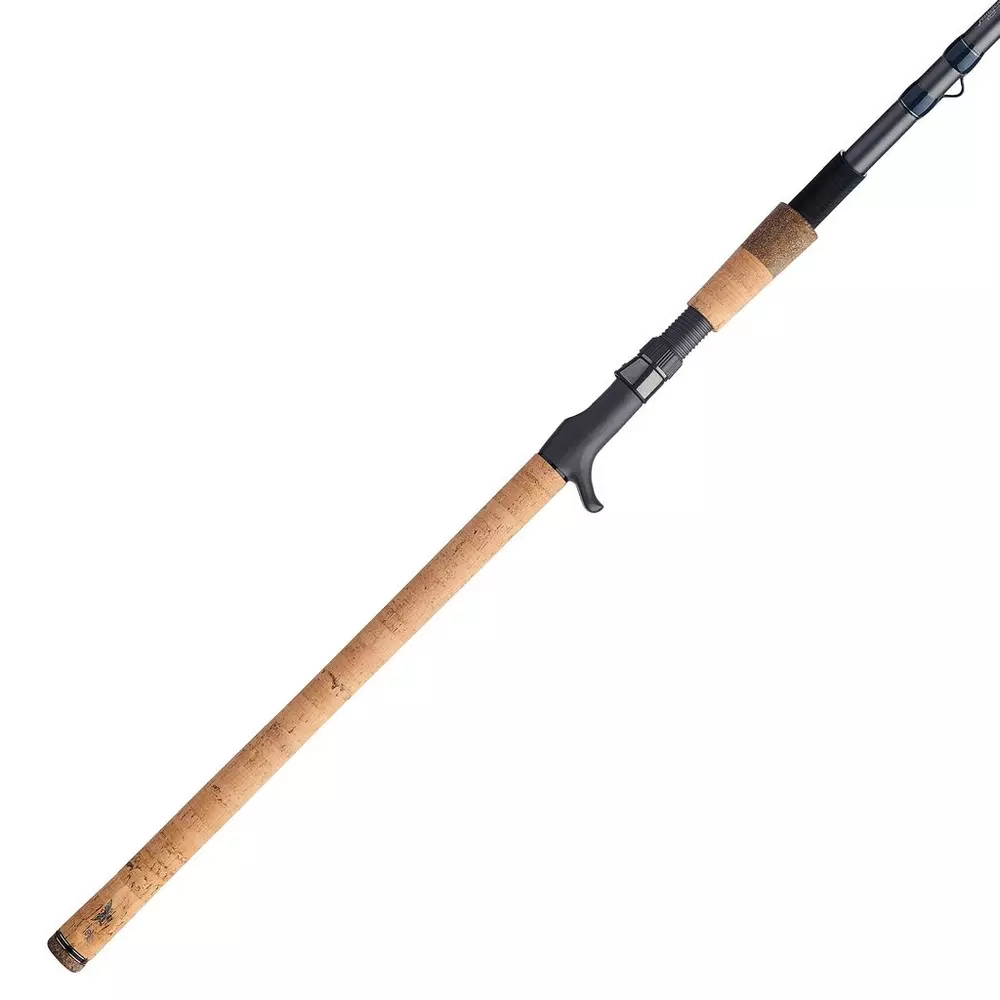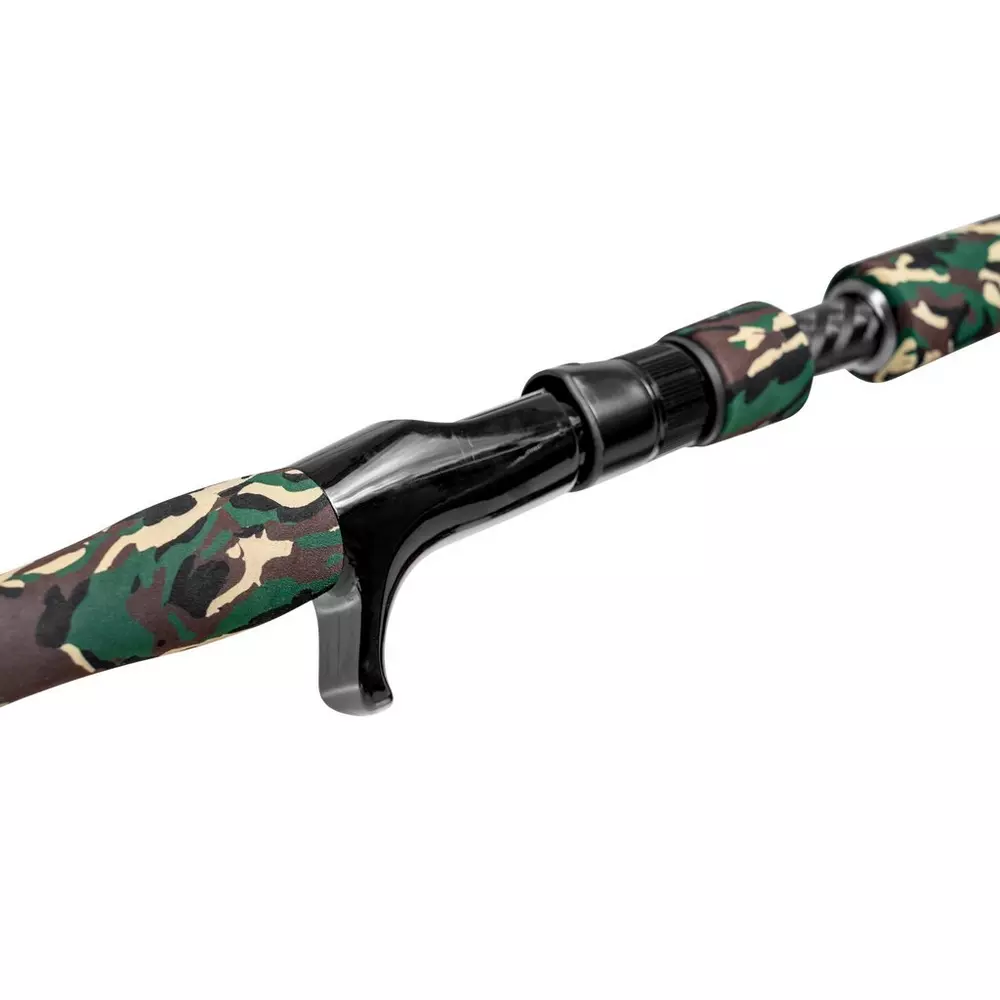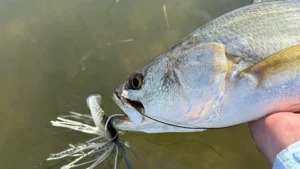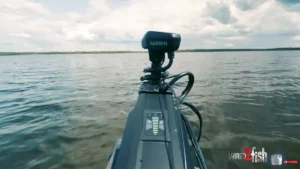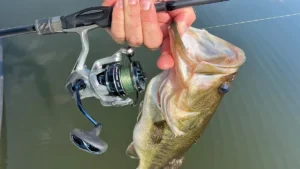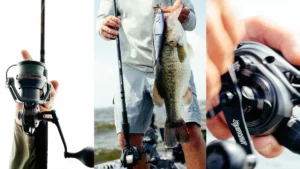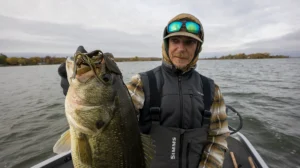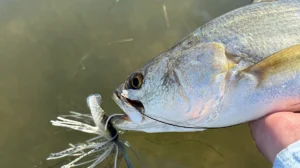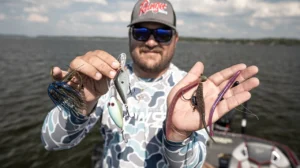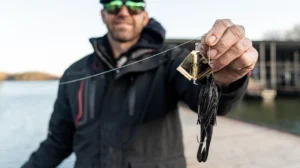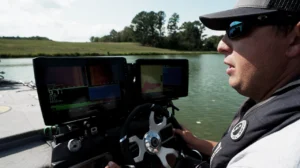When you think about it, rod selection presents some of the most difficult decisions in muskie fishing. One reason is the large range of lure sizes fished to tempt these big predators; mini-bucks weighing just an ounce or so on up to massive softbaits like the BullDawg “Pounder” and the huge crankbaits used for deep-water trolling. Indeed, trolling is a key muskie tactic requiring specialized rods to deploy lead-core line, planer boards and even in-line weights and downriggers. In the more popular realm of casting, choices abound as well. In some situations, long casts are needed to tempt finicky fish and long rods work well. However, many strikes occur at boatside where extra-long rods can handcuff you as the fish dive furiously under the boat. Let’s look at rod characteristics that perform best for particular muskie presentations and fishing scenarios and examine some of the best muskie rods on the market.
BUCKTAILS BIG AND SMALL
One of the classics, and still a top choice, are in-line spinners that present deadly cues that muskie’s often can’t resist. They’re the classic bucktails of our grandpas that still hold appeal. For casting lighter lures in spring and when conditions are challenging, 7 1/2-foot heavy-power rods are a good compromise for baits from 3/4 to 2 ounces. A stout MH rod does fine with baits under 1.5 ounces, as they also carry smaller hooks that are set more easily into a muskie’s bony jaw. These rods are lighter and can cast smaller lures with accuracy to avoid spooking skittish fish.
Double-bladed models have been hot for the past 20 years since Muskie Mayhem’s Cowgirl started strutting her stuff. This big spinner changed the face of muskie fishing as anglers had to beef up their tackle and lengthen rods to deal with its pair of #10 Colorado blades, heavy wire frame and pair of 7/0 trebles. Catch rates soared and lure makers utilized various blade styles and sizes, as well as skirt materials in their big doubles. Eight to 9-foot heavy-power rods are best to make long casts to cover lots of water with a burning retrieve. Long rods enable fine figure-8s that often seal the deal as the flashing lure seems to be escaping with an upward or downward thrust. A bit of tip action is a good thing for casting bucktails accurately. Anglers find that XH rods are heavy tools that can wear out anglers over the course of several hours of burning bucks.
You can also include big spinnerbaits in this category. Match rod length and power to lure weight with an eye toward accurate casting and comfortable rod motions. These baits work best around cover, both weed and wood, as their overhead arm deflects snags. I’ve caught my share of big muskies on spinnerbaits I had been tossing for largemouths, though you’ve got to be patient and lucky to boat fish, as they bend light models into a pretzel and often cut the line without a leader.
JERKBAITS
Similar to fishing jerkbaits for bass, a downward cadence with the rod tip is key to giving these lures freedom to move horizontally and vertically to attract fish. I’ve always favored shorter stout rods with a little softer tip for working jerks over reefs. Rod length also depends on how high above the water your boat sits. In a big Ranger Fisherman, you can get away with a 7.5-footer, but I recommend going shorter in boats with lower gunnels. I consider lure action and cadence to be the most important aspect of jerkbait fishing. A good downward strike really gets the cutting and twitching. You may sacrifice some boatside maneuvers with shorter rods, but most jerkbait strikes come farther from the boat around key structures.
BIG RUBBER
Hitting the scene 25 years ago, Musky Innovations’ BullDawg and its many variations have altered rod choice for muskie anglers. According to most experts, casting massive softbaits is the most challenging style of muskie fishing. However, it can be essential in some waters if you’re after a true giant or personal best fish. Models like the so-called “Pounder” demand the heaviest tackle, as they’re extra heavy and bulky, but also attract some of the biggest fish of the year, especially during that fall window when the big girls fatten up for the winter.
To move a big chunk of plastic in a muskie’s mouth and effectively set the hook, rod length and extra-heavy power are at a premium, as well as good rod positioning. Rods reaching 9.5 feet allow you to lean on a hooked fish to shorten the battle, or to tease it into a boatside strike. That’s why the physical demands of these presentations can be grueling.
THE FIGURE-8
Muskies are notorious for following lures to the boat and, unlike other species, often are not intimidated by the hull or by anglers staring down at them. For that reason, veteran muskie anglers take the time to practice making a Figure-8 in the water beside the boat. Some who are highly skilled at this art catch nearly half their fish with this boatside move. Longer rods allow the angler to sweep the lure up and then down, adding vertical as well as lateral components to the move.
While an 8-shaped move is classic, extended oval or egg-shape rod movements work, too. They can suddenly boost speed and add vertical moves. For this situation, holding the rod firmly with both hands increases speed and hook-setting power.
TROLLING
Muskies are never abundant, so it makes a lot of sense to cover as much water as possible to find one or more of these giants. In waters of the Great Lakes like Lake St. Clair and Green Bay, anglers often use planer boards to run multiple lines to up their odds even further. This allows experimenting with different lures and colors simultaneously. If one particular lure is drawing strikes you can have more lines to similar models. Rod holders spaced along the gunnels allow a good spread.
For minnow baits like a Jake or Super Shad Rap, 8-foot heavy rods work well, allowing these moderate-size lures to work against the rod without overloading the blank. When dragging big baits like Headlocks, Mattlocks, or Kirby’s, go up in length and power. An XH-rod at the lighter end of that spectrum excels, though a broomstick is too much for trolling. Meanwhile, a less powerful rod will be overstressed by their heavy pull and hooksets can be missed. Pay close attention to the durability of trolling rod components and their blanks. They’re under a heavy bend for many hours at a time and that can overstress some fine graphite models. Save your lighter, fast-action sticks for precision casting.
ROD ARRAY TODAY
When I started muskie fishing over 35 years ago, few rodmakers had turned their design attention to muskie rods, believing that it was a small niche market tucked away in northern Minnesota and Wisconsin. St. Croix, located in Wisconsin’s muskie heartland, was the first company to offer production rods. Custom Shops such as Thorne Brothers in Minnesota’s Twin Cities was a go-to place for muskie men to gather and pick out rods. Fast-forward 20 years and this sport has exploded, thanks to stocking programs that introduced muskies to new areas, as well as fishery management that focused on trophy fish and catch-and-release. Across the country, we’ve seen greater angler appreciation of these massive and often moody gamefish.
SHIMANO
Shimano entered the market and today offers several series of rods, including the popular Compre, available in 4 lengths and heavy and XH power up to 9 feet, 9 inches. The two longest models are telescopic for easy storage in rod lockers. These rods have a split grip that allows easy two-handed casting and works well for working a boatside Figure-8, for $169.99.
DAIWA
Daiwa previously offered 3 models in their DXM Series, including telescopic 8.5- and 9-footers for easy storage. These have been replaced by the Prorex series, which include models ranging from 7.5 to 9.5 feet; the larger of which feature retractable butt sections like Daiwa’s legacy muskie rods.
OKUMA
Okuma has revised their EX Musky Rods with EVX B-Series, with Unidirectional Fiber Reinforcement (UFR), reported to triple the strength and lifting power of the blank. They have Sea Guide’s RS ring guides for durability and long usage with thick braided lines. Choose from 10 models from 7.5 to 9 feet 3 inches, $59.99 to $164.99.
FENWICK
Fenwick’s Elite Tech Muskie lineup includes three models from 8 1/2 to 9 feet, with two XH models that handle muskie lures up to 12 ounces. With TAC cork grips, they retail from $129.99 too $199.99.
SAVAGE GEAR
Savage Gear, recently acquired by Pure Fishing, offers the Squad Musky Casting Rods, in three lengths from 7 feet 9 inches to 9 feet and 3 powers (MH, H, and XH, for $199.99. These Battletek models feature one-directional carbon fiber with reinforced tips for strength and durability.
13 FISHING
13 Fishing’s Omen Musky Casting Rods come in 3 lengths (8.5, 9, and 9.5 feet) and two powers (H and XH). They’re telescopic and have Fuji reel seats, stainless-steel guides with Zirconia inserts, and blanks of 36-ton PVG graphite, $259.99.
BASS PRO SHOPS
For those on a more limited budget, Bass Pro Shops offers Muskie Angler Rods, with MH, H, and XH powers, and lengths of 7 and 7.5 feet, $49.99.
ST. CROIX
St.Croix builds on their history with Legend Elite Muskie Rods featuring Fuji’s new Palming Reel Seat and Fuji’s top-end Torzite guides that are 40 percent lighter than SiC guides and more impact-resistant. Six models are available, from medium heavy to XH, $550.00.
For about half that price, their Premier Series Musky Casting Rods are tailored to various types of presentations, given the rod-building staff’s long association with muskie fishing. The actions on all are fast, with MH, H, and XH powers available, in 7.5- and 8-foot lengths. Built of St. Croix’s proprietary SCII carbon, they feature durable double-foot Kigan Master 3D guides.

